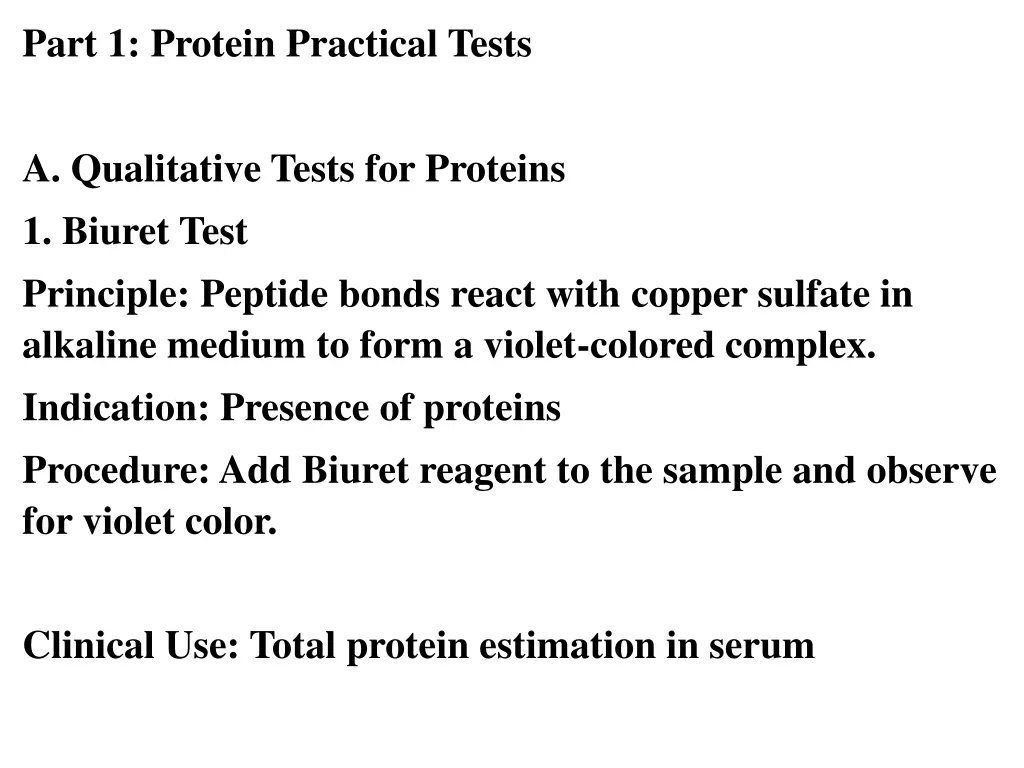
Protein Qualitative Tests and Clinical Uses
Explore various qualitative tests for proteins including the Biuret test, Xanthoproteic test, Millon's test, Ninhydrin test, and Heat Coagulation test. Learn their principles, indications, procedures, clinical uses, and observations. Discover how these tests help in detecting the presence of proteins and specific amino acids in different samples.
Download Presentation

Please find below an Image/Link to download the presentation.
The content on the website is provided AS IS for your information and personal use only. It may not be sold, licensed, or shared on other websites without obtaining consent from the author. If you encounter any issues during the download, it is possible that the publisher has removed the file from their server.
You are allowed to download the files provided on this website for personal or commercial use, subject to the condition that they are used lawfully. All files are the property of their respective owners.
The content on the website is provided AS IS for your information and personal use only. It may not be sold, licensed, or shared on other websites without obtaining consent from the author.
E N D
Presentation Transcript
Part 1: Protein Practical Tests A. Qualitative Tests for Proteins 1. Biuret Test Principle: Peptide bonds react with copper sulfate in alkaline medium to form a violet-colored complex. Indication: Presence of proteins Procedure: Add Biuret reagent to the sample and observe for violet color. Clinical Use: Total protein estimation in serum
2. Xanthoproteic Test Principle: Aromatic amino acids react with concentrated nitric acid to form yellow nitro derivatives. Observation: Yellow color that deepens with alkali. Use: Detection of tyrosine, tryptophan, and phenylalanine.
3. Millons Test Principle: Tyrosine reacts with Millon s reagent to give a red color. Use: Specific for tyrosine-containing proteins.
4. Ninhydrin Test Principle: Amino acids react with ninhydrin to produce a blue or purple complex. Use: Detection of free amino acids.
5. Heat Coagulation Test Principle: Proteins denature and coagulate when heated. Use: Detection of albumin in urine (proteinuria).






















